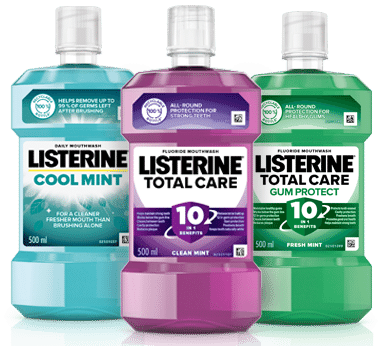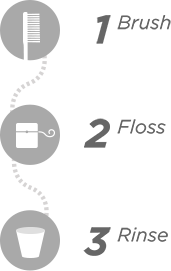If you or someone you know wears braces, you’re used to getting food stuck in them. That’s just part of the whole experience. And when you wear cool wires on your teeth (yes, we’re talking about the fluorescent-colored ones), there are all sorts of new hidden cracks and corners for food particles to get trapped in. The excellent thing about liquid, and LISTERINE® rinse is that it targets all those tough-to-get-to spots.
STEP 1: Pour 20ml (4 teaspoons) of LISTERINE® TOTAL CARE rinse into a cup.
STEP 2: Without diluting the solution with water, empty the contents into your mouth.
STEP 3: Swish for a full 30 seconds (try counting to 30 in your head, or using a stopwatch). Don’t worry if you can’t get to 30 seconds the first time—it gets easier each time you try.
STEP 4: During rinsing, swish in your mouth.
STEP 5: Spit the solution out in the basin.
A Healthy Mouth Needs A Three-Part Approach
Brush
Floss
Rinse
Smart Tools
Fluoride toothpaste
Soft bristled brush or an electric brush
Make attempts to floss
Rinse with antibacterial mouthwash that kills germs in hard-to-reach spots
Listfeed
4 Tips To Combat Gum Disease
Mouth Fact
How To Avoid Bad Breath
Ask Mouth Coach
What Is Fluoride?

Products
A mouthwash for every need
Use transparent background for content area?:
SPECIAL CONSIDERATIONS FOR PEOPLE WITH BRACES
When you wear braces, and your mouth is in brackets, bands and wires, cleaning your teeth sufficiently becomes trickier and more time-consuming. For this reason, the development of white lesion spots in the mouth during orthodontic treatment is usually a signal you don’t have an effective rinse routine. Plaque also more readily accumulates, making gum disease a common accompaniment to braces. The best way to meet these mouth-cleaning challenges is to practice good, regular oral hygiene at home and to keep up with visits to the dentist.
